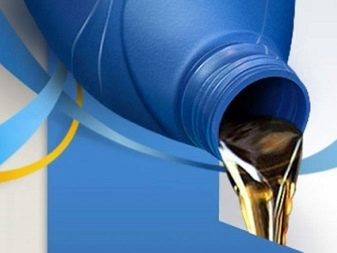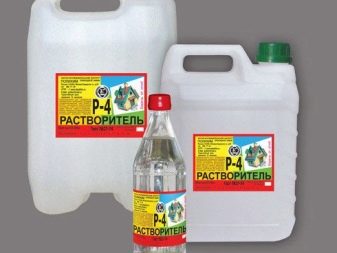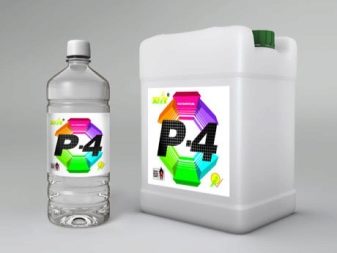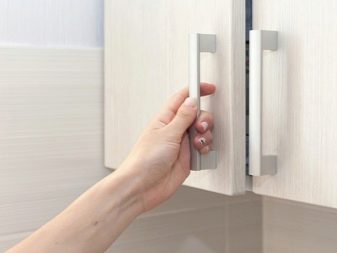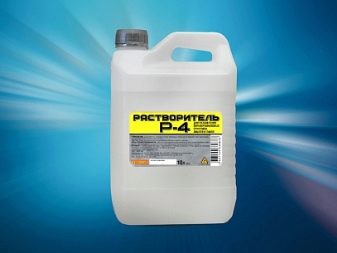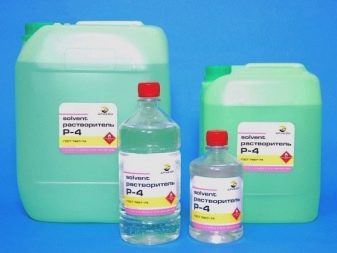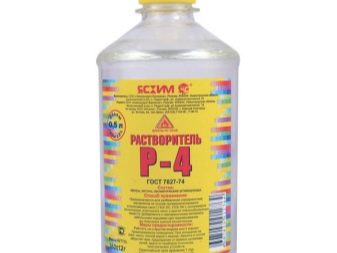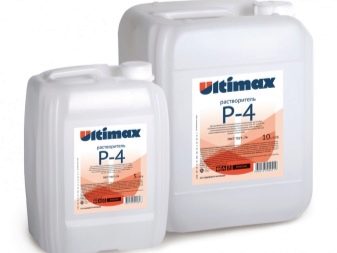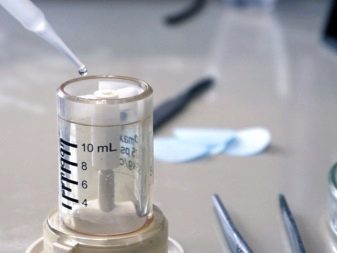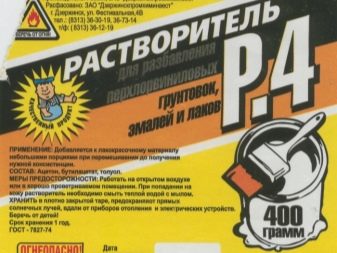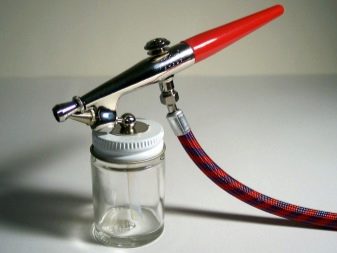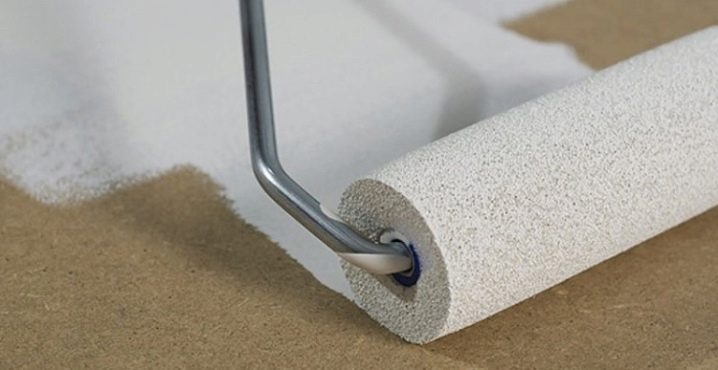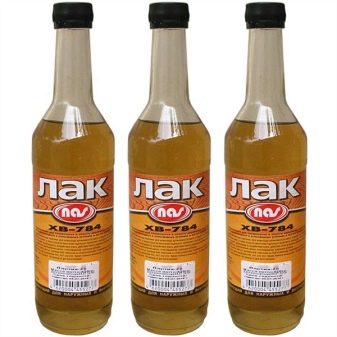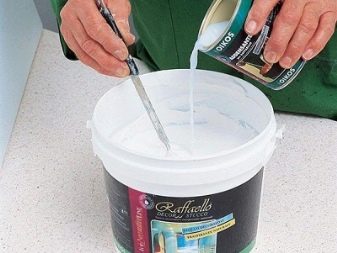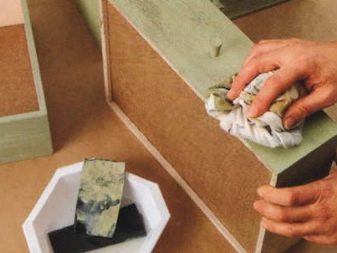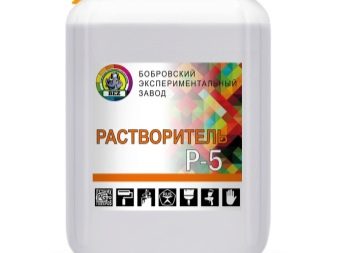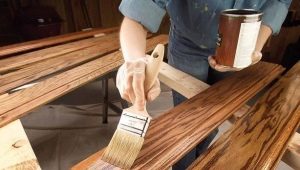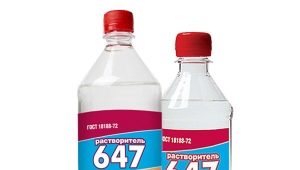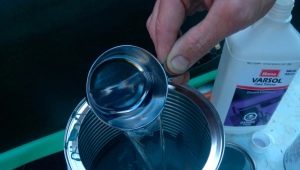Solvent P-4: technical specifications
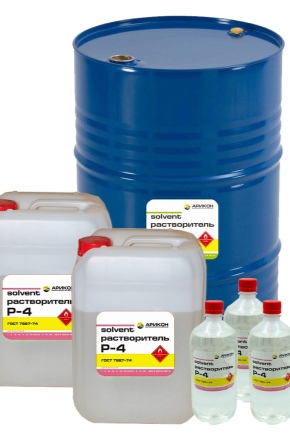
If during the finishing work there was a question about the purchase of a solvent, many prefer the composition of the P-4. It is used not only for repairs, but also in everyday life.
To understand what are the reasons for its relevance, you need to have an idea about its features, purpose and precautions when using the composition.
Distinctive features
R-4 is a multicomponent mixture based on chemical compounds, presented in the form of a transparent liquid. Sometimes it can have a characteristic yellowish tone. This material does not include visible suspensions, has a high degree of volatility, as well as a specific smell. It is indispensable when performing painting work., has components that dissolve paints and varnishes.According to the manufacturers, the composition makes it economical to use the materials in which it is added.
Solvent R-4 is a universal compound that is compatible with various painting products. It can dissolve various types of varnishes and enamels., which allows to achieve the desired degree of viscosity and thickness of the working coating solution. When mixed with other formulations, it does not form clots and delamination.
Its distinctive feature is the fact that its addition to paintwork materials does not make the painted surface dull, as when diluting coloring compositions with other solvents.
Since there are volatile components in the composition, when opened, it is added to the coatings and immediately closed. Work with the prepared material is necessary for a short time., since its insistence in the process of work will change, which may affect the thickness of the applied layer. Do not keep solvent open during operation., so as not to poison toxic fumes. In addition, if the bottle is opened, the amount of liquid inside it will gradually decrease.
Due to volatility need to store the composition, tightly closing the lid. When the solvent is not needed, it is closed and cleaned in a dark place where it will not be exposed to direct sunlight.
It is important to remove it away from children, take into account the period and temperature of storage, which indicates the manufacturer. The choice of location must be treated thoroughly, since the material is explosive and can ignite from any spark.
Composition
The solvent components are butyl acetate (12%), toluene (62%) and acentone (26%). Due to the concentration of the components of the solvent is characterized by high fluidity. Due to butyl acetate, the material enhances the gloss of the materials applied to the base. It also prevents fading and blanching of the paint.
Specifications
R-4 solvent is made according to new technologies with modern equipment. Therefore, it is of high quality and performance.
In addition to the lack of coagulability, the composition is characterized by the following physico-mechanical characteristics:
- mass fraction of water according to Fisher - 0.7%;
- ethyl volatility - 5-15;
- acid number - 0.07 mg KOH / g;
- coagulation level - at least 24%;
- packaging - from 0.5 to 10 liters and more;
- flash point is -7 degrees C;
- spontaneous combustion - from +550 degrees C;
- substance density - 0.85 kg / l;
- capacity - plastic container or glass bottle.
The density of a substance is determined by temperature and can have an error of measurement of up to 5%. With regards to packaging it can be noted that it differs in type of use. For example, for domestic needs, the composition is packaged in containers with a capacity of 0.5, 1, 3, 5, 10, 20 liters. While the weight for every 0.5 liters will be 0.4 kg, you need to know when buying a solvent for the total amount of paint.
Packing for industrial use more. Today it is 100 and 216 liters. The weight of the finished product in such containers is 72 and 165 kg, respectively. It should be noted that the amount of packaging can vary from different manufacturers, which can be specified upon purchase in the labeling description. In this case, the weight of the material per liter may differ.
Shelf life and solvent storage is 12 months. During this time, the components included in the composition do not change their properties. After the time the material must be disposed of. However, the solvent must not be allowed to enter sewage or groundwater.
Purpose
R-4 can be used to effectively dilute coatings, which are based on resins (PSC LS, PSC LN, epoxy) or copolymers of vinyl chloride,as well as other film-forming substances with the exception of enamel XB-124.
The composition is used not only ordinary masters, but also professionals. With it, you can paint the surface in a mechanized way using a sprayer. In addition, it is suitable not only for dilution: it can be used to degrease surfaces of various types.
They can dilute the priming compositions XB-062, XB-079, XC-010, XC-059, XC-068, XC-077, MS-067 and XB-004, XB-005, EP-0020 putty. This composition copes well with paint stains.that need to be removed. He is able to degrease the surface and wash the brush after painting.
Using it, you can cope with the preparation for the finishing of the problem areas of the floors, which will contribute to better adhesion. Besides, Solvent R-4 can easily remove some types of glue from different surfaces.
Consumption per 1 m²
Manufacturers indicate on the packaging of the solvent approximate consumption of 1 square. The exact data cannot be named, since in each case an individual amount of liquid per liter of material to be diluted will be required. It depends on the density, as well as a number of factors that directly affect the consumption of volatile material.
These include:
- method of application (when applying paintwork materials manually and by spraying the flow rate is different);
- air temperature in the room (the higher it is, the faster the liquid erodes);
- shelf life of paint or enamel used;
- LKM category.
Approximate consumption rates of kg / l for specific paintwork materials look like this:
- XB 784 lacquer - 50% by spraying and 25% by airless application;
- XC 010 primer - 40% when using a sprayer and 30% if using a brush;
- PF 115 / PF enamel - 12-15% when applying paint with a brush;
- enamel HV 124 / HV - 50% with the compression method of application and 35% with airless.
You can not exceed the concentration of solvent in the paint, as this paint can lose its best qualities.
Application features
The solvent used is metered, adding it to the working material in small portions, until the paint coating material reaches the desired consistency. To make the composition of the working material as effective as possible, its share should not exceed 10% of the total amount of paint and varnish. It is important to ensure that no water gets into it when working with diluted material. This is especially detrimental to the paint, since, despite the presence of butyl acetate, it will cause the distortion of the color of paintwork materials. If water enters the diluted formulation, transparent materials will turn white.
If you perform a degreasing surface, the composition does not need much.No matter how much it is poured onto the base, it will dry out completely. What matters is not quantity, but quality of processing.. In addition, you should take into account the fact that the dilution of viscous substances is convenient for application, but is not always necessary. Especially it concerns primers under plaster. Therefore, when buying finishing and painting materials you need to thoroughly study the instructions on the package.
Precautionary measures
The composition is toxic and can accumulate inside the body. Solvent vapors released into the air are harmful to humans, which in some cases can lead to dizziness, and others - to loss of consciousness and even death. You can not work without fresh air, as inhalation of vapors in a closed space for a long time can lead to clouding of consciousness, disorientation, drug intoxication, edema and damage to the central nervous system and the organs of the gastrointestinal tract.
During the work it is important to provide ventilation in the room where painting works are carried out. If there is no hood, you need to open the windows or vents. To protect against toxins, you must use a respirator or a mask.
In addition, it is necessary to protect the skin of the hands, wearing gloves.If the composition is in contact with the skin for a long time, the liver may suffer. Therefore,If the mixture comes into contact with the skin, wash it immediately with warm water and soap.
If signs of dizziness are noticed, you should drink as much water as possible to induce vomiting and to clear the stomach. If you have symptoms of poisoning. You can not smoke in the room, you can not allow the appearance of the slightest spark near the solvent. It is necessary to extinguish the composition with finely dispersed water, as well as fire extinguishing agents in the form of fire extinguishers with chemical and air-mechanical foam.
What to replace?
Solvent P-4 has its counterparts. If for some reason it was not at hand, or another composition with the same quality indicators is fundamentally needed, You can replace it with the following means:
- P-4A. This solvent is the closest analogue of the considered means for dilution of paint and varnish materials. Unlike P-4, 4A is not composed of butyl acetate. Due to this, it can interact with enamels of the type XB-124.
- R-5 / R-5A. These compositions are characterized by a wider scope.The concentration of chemical components in them is somewhat different: toluene in the composition is present at 40%, the proportion of acetone and butyl acetate accounts for 30%. Such solvents are suitable for use with rubber, silicone and polyacrylic resin materials.
- R-12. As part of this solvent, acetone is replaced by xylene. Therefore, the ignition temperature of this material is significantly lower and is +490 degrees C. It is used in auto repair shops. This composition can be diluted enamels and remove the old car paint.
However, the composition is not so versatile, so you need to mix it with caution. For example, when combined with hydrogen peroxide, acetic or nitric acid, it forms explosive mixtures. It is aggressive towards plastic surfaces. Choosing R-4 or its analogs, you can look at the products of different brands. For example, a well-known solvent manufacturer is "Dmitrov Chemical Plant", whose products today are known and in demand not only in the domestic market, but also in 70 countries of the world.
No less well-known solvent developer is the Belarusian Naftan company. The company is constantly improving the efficiency of its product range, offering customers high-quality R-4 solvents for household use with 1 and 2 liters packages.
You can look at the solvents Profi and Solv. The first composition is actively used to dilute glyphthalic, acrylic, epoxy, melaninoamide and nitrocellulose paints and varnishes to the desired consistency. Solvol solvent, depending on the variety, is used to dilute ethyl silicate and epoxy paints and varnishes.
See the following video for the difference between thinner and thinner.
